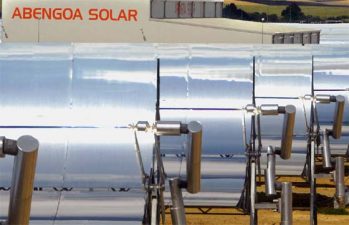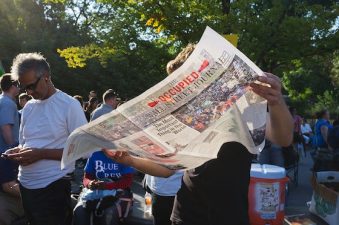 We keep harping on about making the most out of solar energy, particularly in the Middle East and North Africa where we have more than our fair share of sun, but have any of us really thought about what such a future might look like? As much as we Green Prophets would love to see more earth architecture and buildings made out of recycled materials, recent history suggests that the bulk of developers are more likely to opt for more modern designs, like this concept for a mixed-use tower in Dubai.
We keep harping on about making the most out of solar energy, particularly in the Middle East and North Africa where we have more than our fair share of sun, but have any of us really thought about what such a future might look like? As much as we Green Prophets would love to see more earth architecture and buildings made out of recycled materials, recent history suggests that the bulk of developers are more likely to opt for more modern designs, like this concept for a mixed-use tower in Dubai.
Maximum and minimum
Graft Architects has designed Vertical Village – a series of residential and office towers that has what looks to us like a futuristic skirt of photovoltaic panels. This concept achieves the dual ideal of mitigating excess solar gain inside the buildings, to keep energy needs to a minimum, and maximizing the amount of energy that the skirt of pv panels absorbs.
This is achieved by aligning the self-shaded program at the northern edge of the site along an east-west axis, which in turns reduces the penetration of low-angle sun, while positioning the solar panels so that they receive as much southern exposure as possible.
Other efforts to reduce energy loads include recycling energy or hot water collected on the solar roof back inside the building.
The ultimate mixed-use development
And what of the towers, each facing a different direction? “The residential and hotel buildings have been sliced and leaned to firstly create large scale focal points, giving a unique address to each slab, and also to create a powerful and constantly shifting skyline as one drives by,” the designers explained over on Arch Daily.
Meanwhile, beneath the skirt of panels are a series of dining, retail, and entertainment facilities that complete the ultimate mixed-use development, basically ensuring that no one living there will have to jump in their cars at all in order to meet their daily needs. Whether or not this is a good thing is still up for debate.
What architecture future do you want?
We want to hear from you: what does the future of architecture hold, particularly in Dubai, where building the biggest and baddest towers have been all the rage over the last decade or so? Will the Emirate follow Abu Dhabi’s example and incorporate a more sustainable approach to development? And what is sustainable anymore? Glass and steel? Or is there no such thing?
Give us a shout if you’re in the know.
:: Arch Daily
More on Gulf Architecture:
Green-Thumbed Journalist Nick Leech Defends Gulf Design
What Happened to Islam’s Environmentally-Friendly Architecture?
Mud Structures in the Muslim World: Spectacular and Sustainable







It’s great to see architects and designers exploring and taking advantage of technologies, it’s just that the materials used in solar panels themselves may not be biodegradable or reusable, adoptable a sort of cradle-to-grave approach. Some of the materials inside these technologies may poison the earth when eventually put into a landfill site. Until we choose to use materials that are local and that are able to go back into nature without further being detriment to its health, we aren’t solving the problem of eco-friendliness, we’re just slowing the process down.